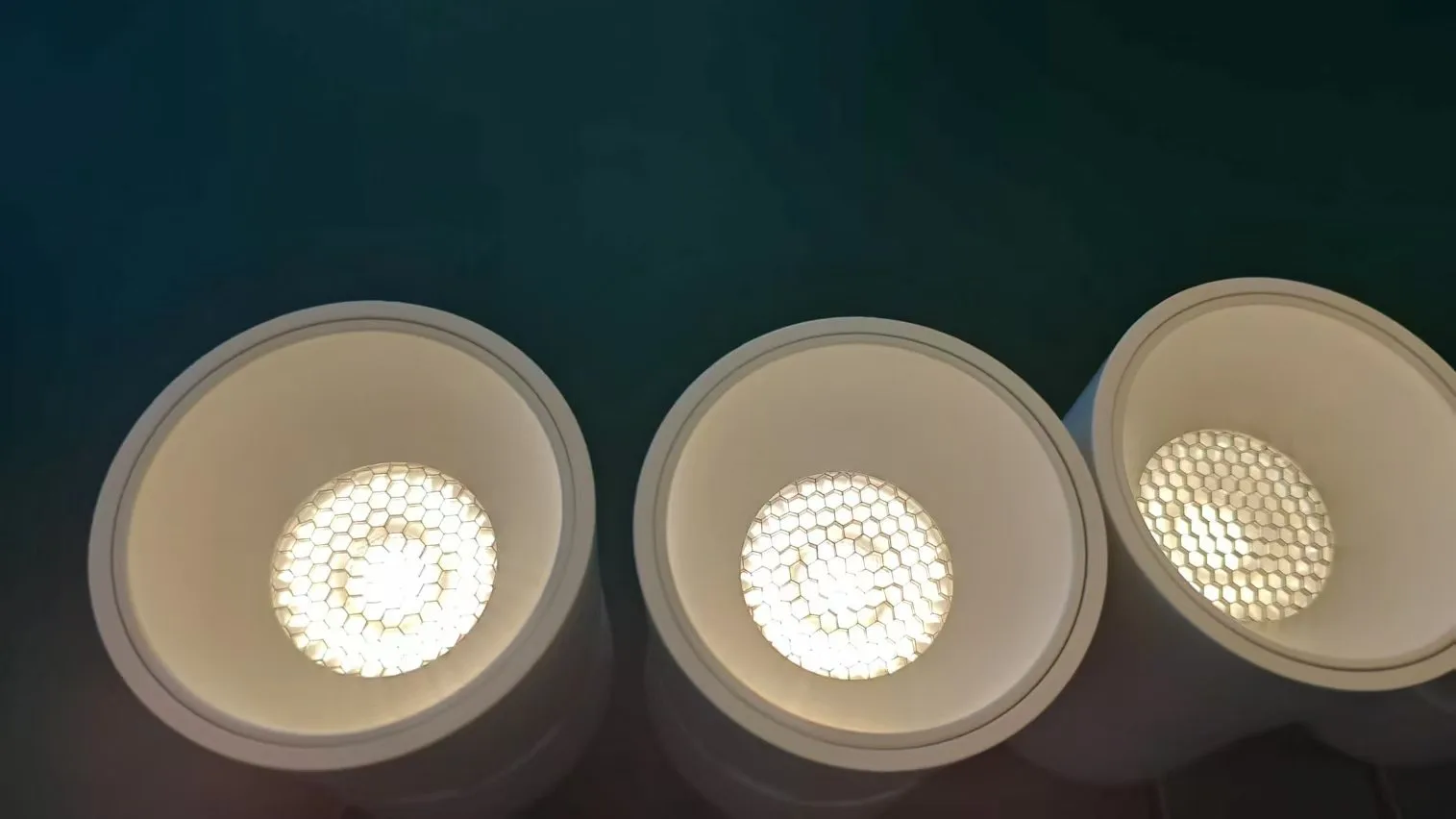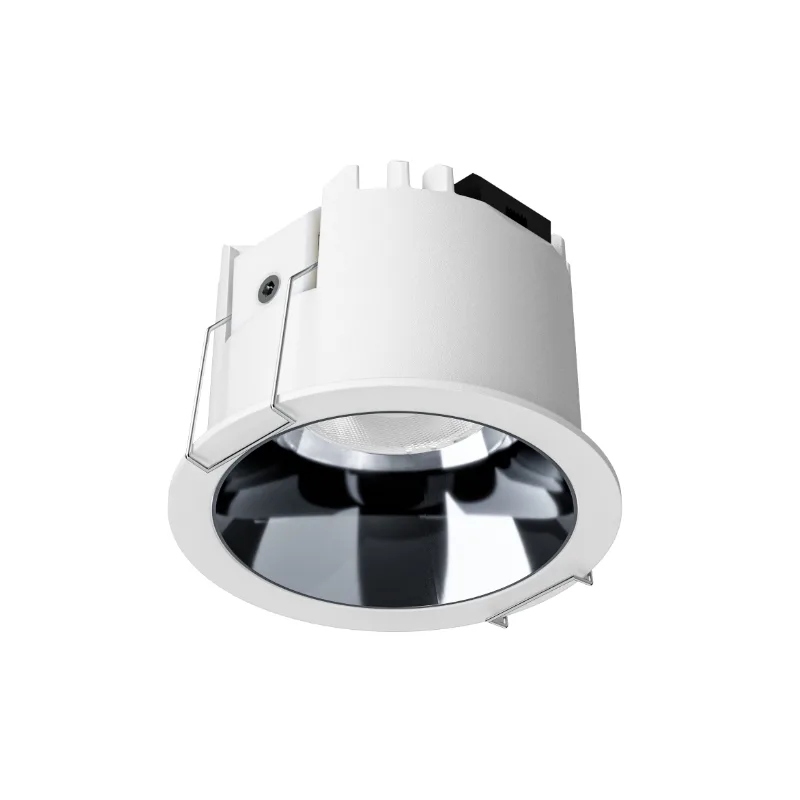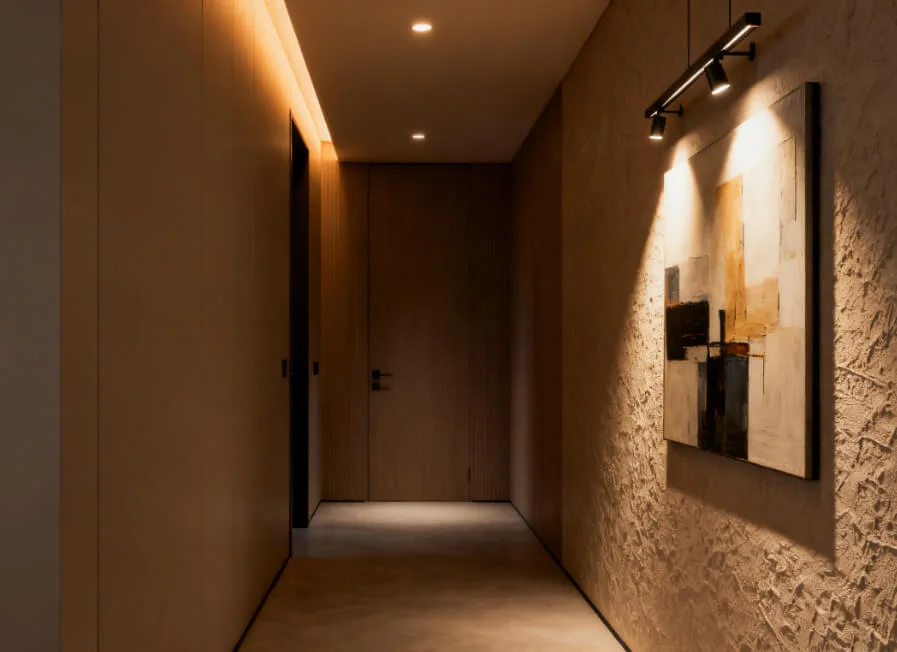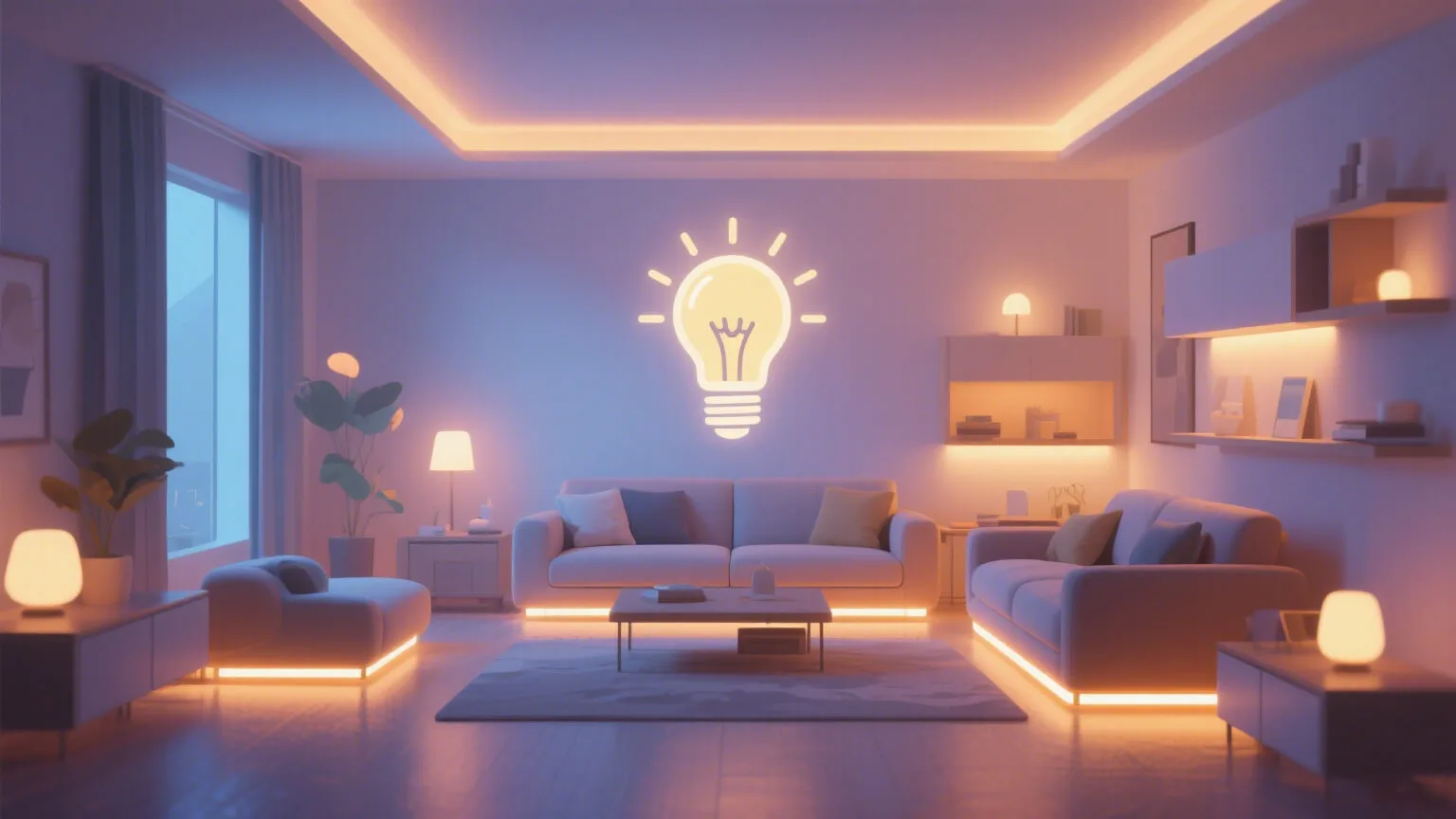In indoor and outdoor lighting scenarios, downlights have become a favorite among many designers and users due to their compact appearance and efficient lighting capabilities. However, the accompanying problem of glare is like a “spoilsport,” ruining the lighting experience and potentially even damaging eyesight. So, how exactly do downlights overcome this challenge and achieve effective anti – glare?
I. Glare: The “Invisible Killer” in Lighting
Glare refers to overly bright light or a strong contrast in brightness within the field of view, causing discomfort to the eyes or a decline in visual function. In the context of downlight lighting, glare occurs when the human eye looks directly at the light source, or when the light creates a strong reflection on surfaces such as walls and floors. It not only causes eye fatigue and headaches but also, with long – term exposure, may affect visual health and reduce work and life efficiency.
As shown in the above image, when we are in such a lighting environment, our eyes will be unconsciously irritated by the strong light, causing discomfort.
II. Unveiling the “Black Technology” of Anti – Glare
(I) Exquisite Optical Design
Optical design is the core “weapon” for downlights to achieve anti – glare. Firstly, by optimizing the shape and angle of the reflector cup, the direction of light can be precisely controlled. For example, a parabolic reflector cup can concentrate and reflect light onto the target area, reducing the scattering of light in all directions and preventing it from directly entering the eyes. Secondly, the deep cavity design is also a common approach. By hiding the light source deep inside the lamp cavity, it increases the distance between the light source and the light outlet, making it difficult for the human eye to directly see the light source, thus reducing the probability of glare from the source.
The downlight in the picture adopts a parabolic reflector cup and has a relatively deep lamp cavity, which can effectively achieve anti – glare function.
(II) Innovative Structural Design
In addition to optics and materials, the structural design of downlights also has its secrets. The honeycomb mesh cover structure is a clever invention. It acts like a “light filter.” When light passes through the honeycomb – shaped mesh holes, it undergoes multiple reflections and refractions, thus being dispersed into soft light, effectively suppressing glare. Moreover, the design of adjustable cut – off angles is becoming more and more popular. Users can adjust the cut – off angle according to actual needs, flexibly controlling the direction of light emission and minimizing the stimulation of glare to the eyes.

As shown in the figure, this downlight with a honeycomb mesh cover structure can reflect and refract the light multiple times to achieve an anti – glare effect.
III. Conclusion
Downlights achieve effective anti-glare effects through a variety of technical means, including optical design optimization, material selection and application, and structural design innovation. When choosing downlights, consumers can pay attention to the anti-glare parameters and design features of the products, and select downlights that can not only meet the lighting needs but also provide a comfortable visual experience, creating a healthier and more comfortable light environment for life and work.





